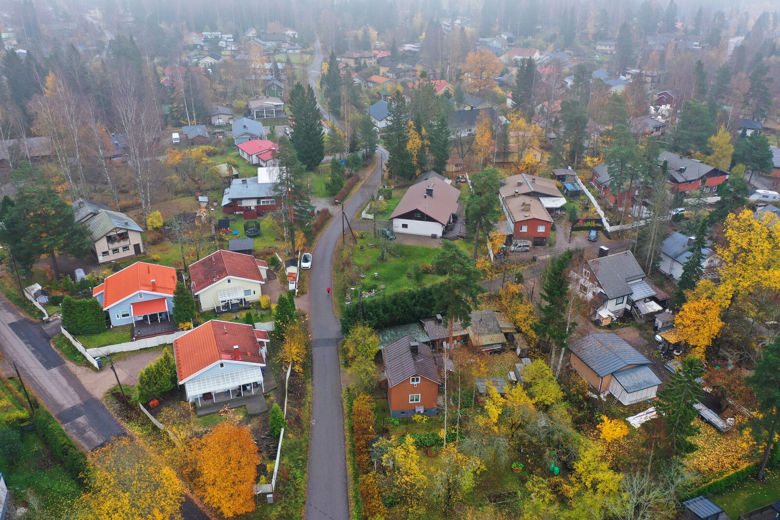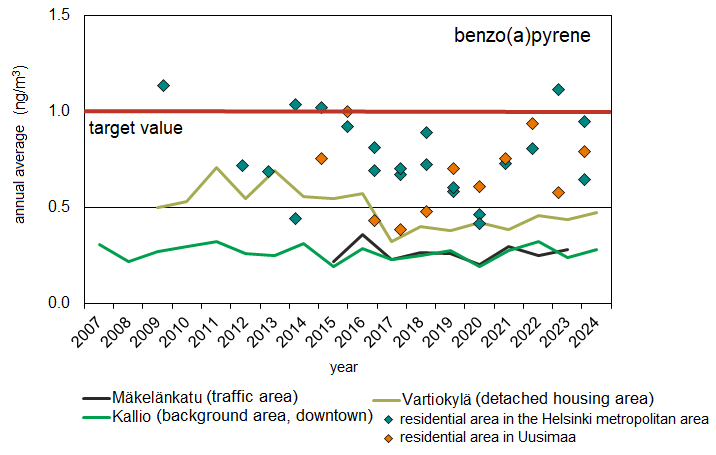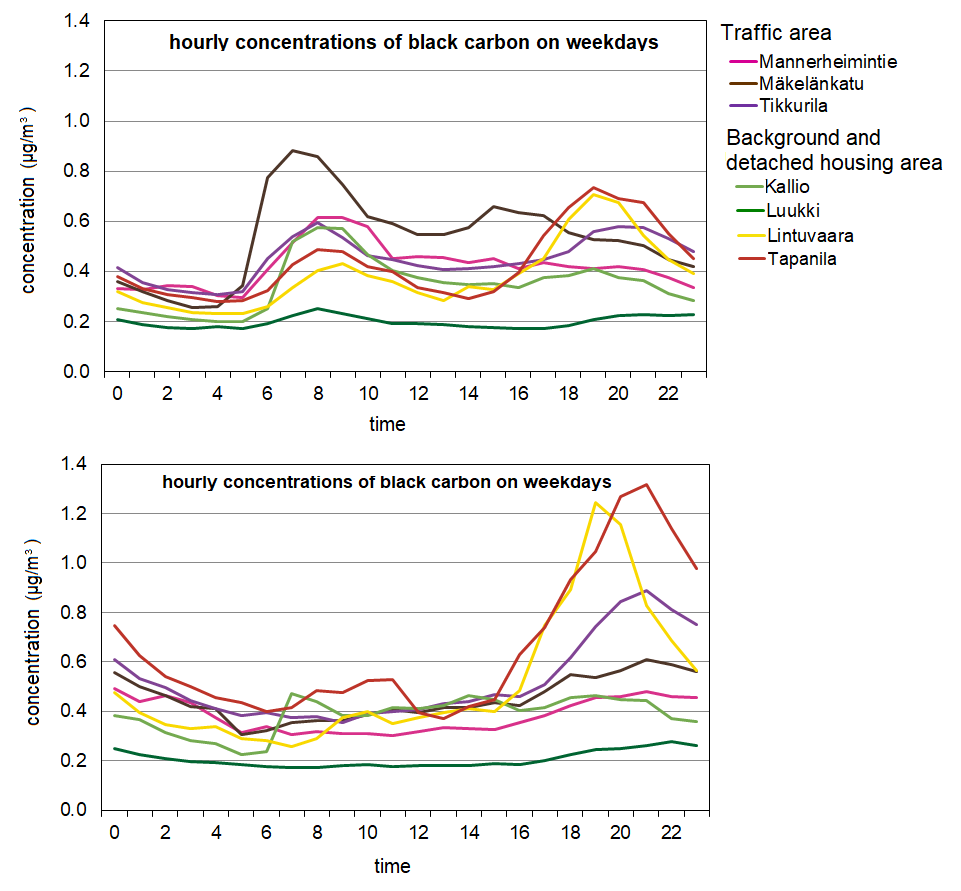High levels of particulate matter continued to be measured in detached house areas in the Helsinki Metropolitan Area

The Helsinki Region Environmental Services Authority (HSY) measured fairly high concentrations of fine particles in several detached house areas in 2024. However, in the last 15 years, concentrations have fallen in detached house areas, but they are still close to the new limit value that will come into force in 2030. Good wood burning practices can reduce emissions and the health hazards they cause to the surrounding environment.
The impact of wood burning varies between and within detached house areas
Last year HSY measured the concentrations of benzo(a)pyrene, a component of PAHs, in six locations in the Helsinki Metropolitan Area and in Karkkila, Uusimaa. Benzo(a)pyrene is produced in incomplete combustion and elevated concentrations occur especially in densely built detached house areas where a lot of wood is burned. Concentrations in some detached house areas are close to the current target value (1 ng/m3), which will become a binding limit in 2030.
- In 2024, the highest concentrations of benzo(a)pyrene in detached house areas were measured in Päiväkumpu in Vantaa and the lowest in Vartiokylä in Helsinki. The results of Tapanila, Lintuvaara and Karkkila were placed between them. Over the past 15 years, concentrations have decreased in measurements made in detached house areas," says Saija Korhonen, HSY's air quality expert.
The air quality problems caused by wood burning vary within and between detached house areas. The location of the measuring station also has a major impact on concentration levels, as emissions from nearby houses are highlighted in the measurement results. The year-to-year variation is also explained by the winter weather conditions, which affect the volumes of wood used and the dilution of smoke. Warm winters generally reduce the need for additional heating in homes.

Annual concentrations of benzo(a)pyrene in the Helsinki metropolitan area and in other parts of Uusimaa. Traffic has little impact on benzo(a)pyrene concentrations. In detached housing areas, concentrations have decreased over the past 15 years.
High levels of particulate matter in small-house areas on winter evenings
In small-house areas, wood burning causes high concentrations of fine particles and the black carbon and benzo(a)pyrene they contain, especially in the evening. Concentrations can rise considerably higher in calm frosty evenings than in busy traffic areas during peak hours.
- We have measured the highest concentrations of wood-burning emissions in cold weather when there is no wind and the smoke is left to hover in the air,” Korhonen says.

Hourly concentrations of black carbon at different times of the day at various monitoring stations in the Helsinki metropolitan area in 2024. On weekday mornings, concentrations rise most sharply in traffic areas. The highest concentrations in detached housing areas are measured on weekend evenings, when fireplaces are used the most.
Less emissions from skilled wood burning
Wood burning methods have a significant effect on the emissions. Emissions from poor burning are many times higher than those from skillful burning of dry wood in a good hearth. The emissions from wood burning have a significant impact on human health because the emissions are generated in residential areas and spread to the breathing air in the nearby area. The use of fireplaces focuses on the times when people are at home or in their yard and are thus exposed to emissions.
- Everyone can influence how cleanly the wood burns. Only dry clean wood, not debris, is allowed in the fireplace. Emissions from wood burning can also be reduced by replacing the fireplace with a lower-emission fireplace, Korhonen hints.
Information on air pollution
•PAHs, to which benzo(a)pyrene belongs, are produced by incomplete combustion. Elevated concentrations of benzo(a)pyrene occur especially in residential areas with a lot of house-specific wood heating. The impact of traffic emissions on PAH concentrations is minor. Benzo(a)pyrene and many other PAH compounds increase the risk of cancer.
•Fine particles are mainly generated from traffic exhausts, street dust and emissions from wood burning. In addition, they are transported to the capital region from outside the country's borders. Fine particles are considered to be particularly harmful to health, as they can penetrate to the periphery of the lungs. The most sensitive to the health hazards of air pollution are young children and the elderly, as well as people with respiratory and heart disease.
•Black carbon, or soot, is released into the air from incomplete combustion. The main sources of emissions in the Helsinki Metropolitan Area are direct exhaust emissions, wood burning in fireplaces, shipping and long-distance traffic. Organic compounds such as PAHs, other organic compounds, and metals are attached to the surfaces of soot particles released into the air by combustion.
For more information:
- Tips for proper wood burning: Burn Wood Cleanly - HSY
- Air Quality Now Air quality - HSY
- Health effects of air pollutants - HSY
- PAH concentrations in the Helsinki Metropolitan Area and the rest of Uusimaa PAH-yhdisteet - HSY
- Air Quality Expert Saija Korhonen, firstname.lastname@hsy.fi